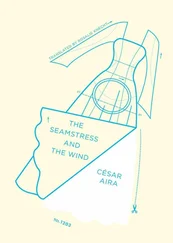The floating corpse was not yet cold when an impressive squad of new-model patrol cars came tearing out of the narrow part of Bonorino in single file and pulled up on the esplanade, with their sirens blaring in a raucous ostinato and their lights flashing relentlessly. The cars at the rear rushed forward in a final spurt of acceleration while the front-runners were already braking. They ended up forming a large semi-circle all pointing at the body. For a moment nothing moved, except for the lights spinning on the roofs of the cars. The rain went on lashing this urban plateau. It seemed to be running off the great dome of light over the shantytown to swell the black floodwaters converging on the corpse.
The first thing to move was the door of the car that had ended up in the middle. A moment later, the doors of all the other cars opened too. But no one got out. The doors stayed open, swinging on their hinges in empty space. If the door of the middle car had closed again, perhaps all the others would have followed suit. But it didn’t. A leg emerged. It was the leg of a woman: fat, short, but shapely. A stocking with a pearly sheen, a red leather shoe with a stiletto heel at least six inches high. Legs emerged from all the other cars, one per door, but these were men’s legs, in trousers of regulation blue, with feet encased in impeccably polished boots. All of the feet, like the first to emerge, hesitated for a moment in the air, thrust out almost horizontally, as if to say: “Shall I take the plunge?” In any case, they were drenched already; not just wet, but pummeled and wrung by the rain.
The little red shoe plunged into the water, followed by the matching shoe, and then, in a single fluid movement (it only took a couple of seconds, and yet it had a certain choreographic grandeur), there was a woman standing beside the car. It was the implacable and widely feared Judge Plaza. The rain renewed its attack on her. Policemen had stepped from each of the cars, all looking respectfully in the same direction as the judge.
She was an extraordinarily short woman and obese, aged somewhere between forty and fifty, with dyed-blond hair (it was naturally dark), and Indian or perhaps partly African features. Very confident, well-groomed, commanding and decisive. She had earned her reputation. She inspired fear. The tabloid journalists loved her, and so did their huge audience, who felt it was time for a tough and energetic justice, unhampered by wigs and precedents, ready to take to the streets and fight crime on its own turf.
A few die-hard liberals criticized Judge Plaza — under their breath, mind you, and among themselves in their ivory towers — for being a “media celebrity.” But that wouldn’t have stopped them approving of her if she hadn’t been so vulgar, so in tune with the bloodthirsty instincts of the masses. In fact they had a very good reason to approve of her, which was that she always chose her prey among the masses that had made her a star. And once she had chosen and the hunt was on, she was as fierce as a wild cat: relentless, vengeful, truly bad, of that you could be sure. There was no escape. The public cheered and cried out for more. It’s odd that it never occurred to those citizens, not even for a moment, as they sat in front of their televisions following the judge’s exploits, that one day she might target them. After all, anyone can end up looking suspicious, given the complexity of modern life in a big city, and she was not the sort of judge to bother with gathering evidence, or comparing witness statements, or giving guarantees; her specialty was destruction, annihilation, and the slightest suspicion or rumor was enough for her to go on. She was a woman to be feared, yet none of her fans was afraid of her. Maybe it was because of her status as a media personality. The villains she was after were personalities too, at least as soon as she was on the case, and the whole operation remained within the kingdom of images. Why would the viewers feel that this spectacle had anything to do with their physical reality? They might as well have believed that someone from the TV was going to call them and give them a huge cash prize or a car or a trip to the Caribbean. Nobody really expects that to happen. It’s often said that television has changed people’s lives, but the truth is that life has maintained its autonomy.
The water was almost up to her knees, which were closer to the ground than those of ordinary mortals. She started walking forward. Her men gathered around her. The judicial police officers under her command were an elite group: experienced, incorruptible, bound together by a samurai mysticism and a blind obedience to the judge, who rewarded their loyalty by providing them with the latest, most sophisticated arms and granting them an autonomy that they exploited to the full. According to the legend, each of the judge’s men had a thousand revolvers.
The corpse was floating at the vortex of the group’s collective attention, the judge’s having magnetized that of all her men. It was something more than attention. They had never seen her like this before, although they weren’t actually looking at her. The floating point in the dark water reflected everything.
One of the judge’s most famous and frequently misunderstood declarations was that her only aim in life was to bequeath to the world, at the end of her brief sojourn, something it had not possessed before. It sounded like a throwaway line, the kind of thing that people trot out when they’re stuck for something to say, but it was more subtle than that. For a start, it’s not so simple to bring something new into the world: it’s a bit like bringing a rock back from the moon, except that these days the moon is really a part of the world. And she wasn’t referring to a combination of pre-existing elements or a rearrangement, but to something really new, a new element, which could enter into old combinations, if anyone so desired. This was a strange ambition for a judge: justice is like a zero-sum game; you could say that its mission, the essence of what it does, is to transform a situation without affecting the overall number of elements. Adding something new is more like what art does.
On the other hand, no one could have been surprised by the judge’s evocation of life’s brevity. She wasn’t old (around fifty and well preserved), but she was at the center of the action, right in the line of fire. Hundreds of criminals were out to get her, and whatever precautions are taken in such a case, they are never sufficient. At that fateful moment, on the flooded esplanade, a thought occurred simultaneously to each of her men: “They’ll have to kill us all to get to her.” And yet, at the same time, they knew that someone, inconceivably, had breached the protective wall.
The lightning was intensifying. The storm had not abated; on the contrary. Wild shudders ran back and forth over the surface of the water, and the floating corpse danced, as if on a short-circuiting electric bed, arching and writhing like a sleeper in the grip of a horrible nightmare.
“To leave something new and different in the world, after my brief residence, something to enrich the lives of those to come. .” Yes, but to do that, wouldn’t she have to die? And wasn’t death the destruction of everything, the new as well as the old? The judge’s aspiration associated the old with the individual, while the new was seen as a legacy to the species as a whole, which meant that death, when it came, would be something positive.
But death, in this case, had arrived ahead of time, nobody really understood how. . And precisely because they didn’t understand, they knew that a revelation was imminent. Just at that moment the television crews arrived, and the news girls, followed by cameramen, came rushing and splashing up to the judge, who had begun to walk toward the corpse, stiffly upright as if in a trance.
Читать дальше












